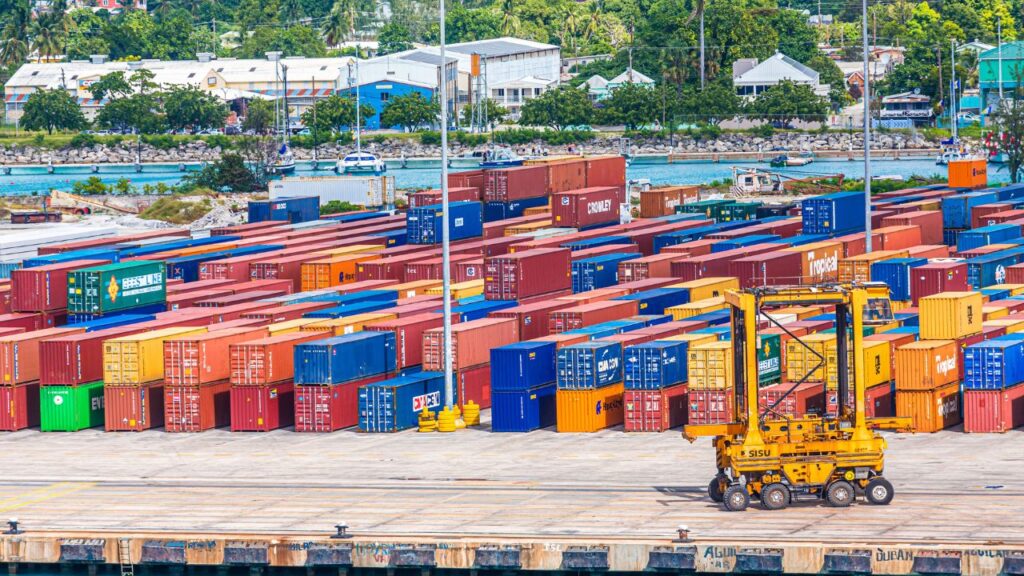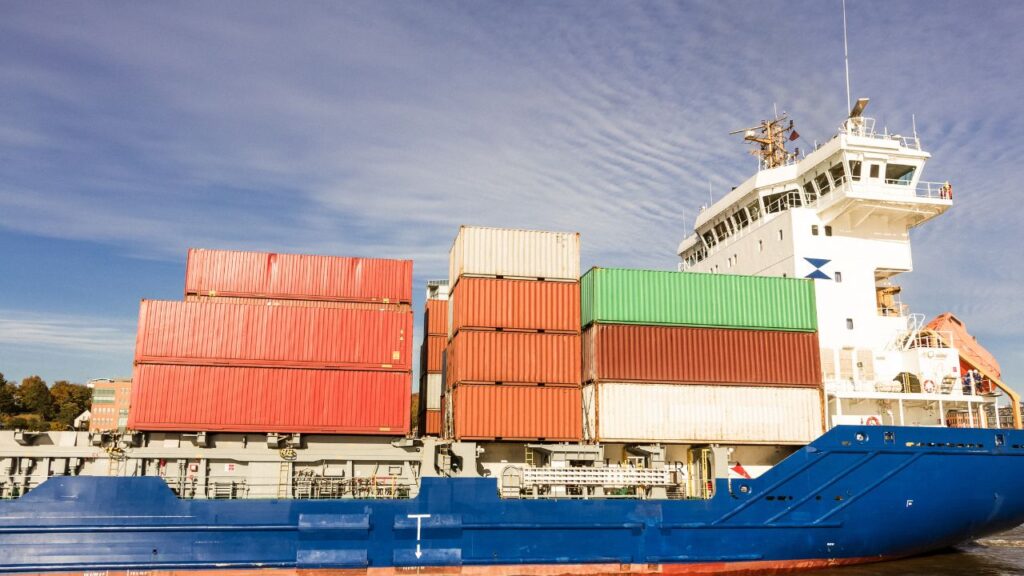As the all-important Christmas shopping season slowly approaches, business owners and retailers worry that a global shipping crisis will leave the store shelves empty, send prices skyrocketing, and affect inflation and the US economy.
It is not just brick-and-mortar and eCommerce giants that depend on the Christmas season for a massive chunk of their yearly profits, but also most small retail businesses depend on the holiday shopping season to flourish.
What’s The Cargo Shipping Crisis?

You know how ships are vital for the global economy—shipping everything from frozen goods to computer parts across the globe. However, they have been subjected to a cargo shipping crisis for quite some time.
Do you still recall when container ships got stuck in the Suez Canal? That trivial occasion observed how international trade could suffer because of global supply chain disruption before the COVID pandemic. The blockage on Suez Canal caused more disruption to the flow of goods globally.
That event also caused a backlog of ships waiting to pass through. Did you know that it was expected that the incident would cost at least $400 million each day in lost productivity? That supply chain crisis demonstrates the value of global trade.
When global supply chains get interrupted, it could ripple effect on businesses and buyers globally. Everyone depends on international trade, further implying the need to have an efficient system in place. Doing so will stop disruptions like this from taking place again.
Container Shipping Crisis 2022

You’re pretty much aware of the impact of the coronavirus on international trade and supply chains by now. The COVID-19 pandemic has resulted in a sharp decline in demand, as factories have been forced to close, and customers and consumers have been staying home.
That lead to a surplus of products, resulting in a sharp decline in sea freight rates. On top of that, many container shipping firms have encountered disruption to the supply chain.
In the end, the global sea freight market was anticipated to stay in a state of flux for the foreseeable future. The effect of the pandemic is unsettling and severe at the same time. Nonetheless, the global shipping industry is trying to cope with the turbulence of the shipping crisis 2022 one step at a time.
What’s Causing the International Shipping Crisis?

Virtually all materials brought in from other parts of the world have suffered. In the past few years, the pandemic ruptured the logistics network, and the cargo lines have yet to return to normal.
Keep reading and find out more about the shipping crisis explained:
The logjam, port congestion, and container shortage
Keep in mind that a logjam, port congestion, and shortages of shipping containers are the major reasons for the shipping crisis.
One of the most crucial aspects of international trade is transporting goods via sea. However, the efficiency of such a system was compromised by a growing issue: container stacking.
When containers are unloaded at the port, they’re often stacked on top of one another without reaching their final destination. That can produce a logjam with vessel fleets, making it hard for new shipments to reach their destination.
UK trucker shortage
The shortage of UK truck drivers is having unforeseen impacts on sea freight, with costs increasing as a result. The trucking shortage has been caused by factors like the pandemic and Brexit.
With that, most big and smaller companies were forced to cancel their shipments (called blank sailings). That resulted in a decrease in accessible capacity, driving up the costs for those who still need to ship products.
Also, the shortages in trucks have a big effect on port operations. Ships are delayed when waiting for cargo to be unloaded and loaded. The scenario is unlikely to go away anytime soon. Therefore, global shipping companies should embrace more disruption in the global shipping industry.
Port congestion
Port congestion is another global shipping concern that can impact maritime trade. It takes place when the number of ships trying to enter a port goes beyond the port’s capacity, causing delays in shipping and increased costs for importers and shippers.
Also, congestion can result in environmental concerns, as ships must wait for days or weeks to enter the port. That can result in ship emissions being released into the atmosphere. To avoid congestion, ports should handle their ship traffic and make sure they have sufficient space to accommodate every vessel wanting to enter.
Container shortages
Container shortages have been an issue during the pre-pandemic and continue to cause challenges for international trade. The shortage is caused by factors such as increased demand from China, the move to online shopping, and the global pandemic.
Therefore, shipping costs increased, and businesses struggled to get their goods to market. The scenario has resulted in disruptions in the supply chain and delays in goods delivery. Shortages of empty shipping containers have been an issue, but they’re specifically serious in Asia. This is where most of the containers are manufactured.
The European struggle
In case you didn’t know yet, Europe has been experiencing global shipping crises. A combination of factors like the pandemic, shortage of containers, and bad weather has seriously disrupted supply chains.
Because of that, ships are stuck in the port, unable to unload their cargo, causing a shortage of essential goods, from medical to food supplies.
Lack of labor
There is a bottleneck of ships at ports around the world. Hundreds of container ships are lining up and patiently waiting for access to overloaded ports, mainly in China and the West Coast.
A labor shortage is part of the shipping issue. In the US and Europe, truck driver shortages indicate it’s more difficult to move containers to their destinations after they are on land. On top of that, port closures caused by the COVID crisis have worsened the traffic jam.
Why Should You Care About This Shipping Crisis?

For consumers, the crunch in the supply chain is more likely to imply higher prices. Ocean freight rates will be, on average, four times record high this year than last.
Shoppers must also watch longer than normal delivery times and may need to have various gift ideas up their sleeves.
Conclusion
The shipping crisis won’t last forever, but news experts expect it to linger on until summer next year. In light of that situation, the ideal course of action for any carriers and businesses is to plan ahead and stay away from ocean trade.
Air cargo seems like a good way to go. Airlines have cut their costs—most are compensating with cargo operations for the lack of passengers.
Rail and land transportation is another choice. However, you will require land routes connected to your warehouses or production centers.
Overall, your best action is to work your inventory ahead of time. Request and order all your goods before the holiday or sales season peaks. Always be informed about the current status of your logistics and shipping partners.
FAQs About the Shipping Crisis
Want to know more about the shipping crisis? Here it is!
Is there a shipping crisis in 2022?
Yes. The container shipping supply chain stays in the deepest crisis it has ever seen. Slowing down the disruption will take a few months. As the year ends, we will stay in the middle of the most severe crisis in the container supply chains going back to Malcolm McLean, who created the container shipping industry in the late 1950s.
How long will the shipping crisis last?
The supply chain crisis could last into 2023 unless the government increases spending on warehouses, ports, and railways.
There needs to be government aid to switch people out of some parts of the economy where demand isn’t too powerful to more crucial parts where the demand is extremely strong and essential for global supply chains.
The White House announced plans to move clogged-up Southern California ports to a 24/7 schedule and permit more time to work through the backlog.
Some manufacturers and retailers reportedly plan to reroute their cargo from such areas around that time to prevent delays.
Is the shipping crisis improving?
We don’t think so. The global shipping crisis has been wreaking havoc in supply chains worldwide since early 2020. Along with the continuous impacts of the pandemic and the Ukraine war, the entire situation isn’t set to improve at the end of the year.
Why will the shipping container crisis not end soon?
The shipping container crisis in China and in other countries won’t ease until the factors causing it are addressed. For example, the flow of empty containers back to the exporting countries should be normalized. A huge number of empty containers are stranded in ports, inland depots, and adjoining empty patches of land in Europe and the US.





